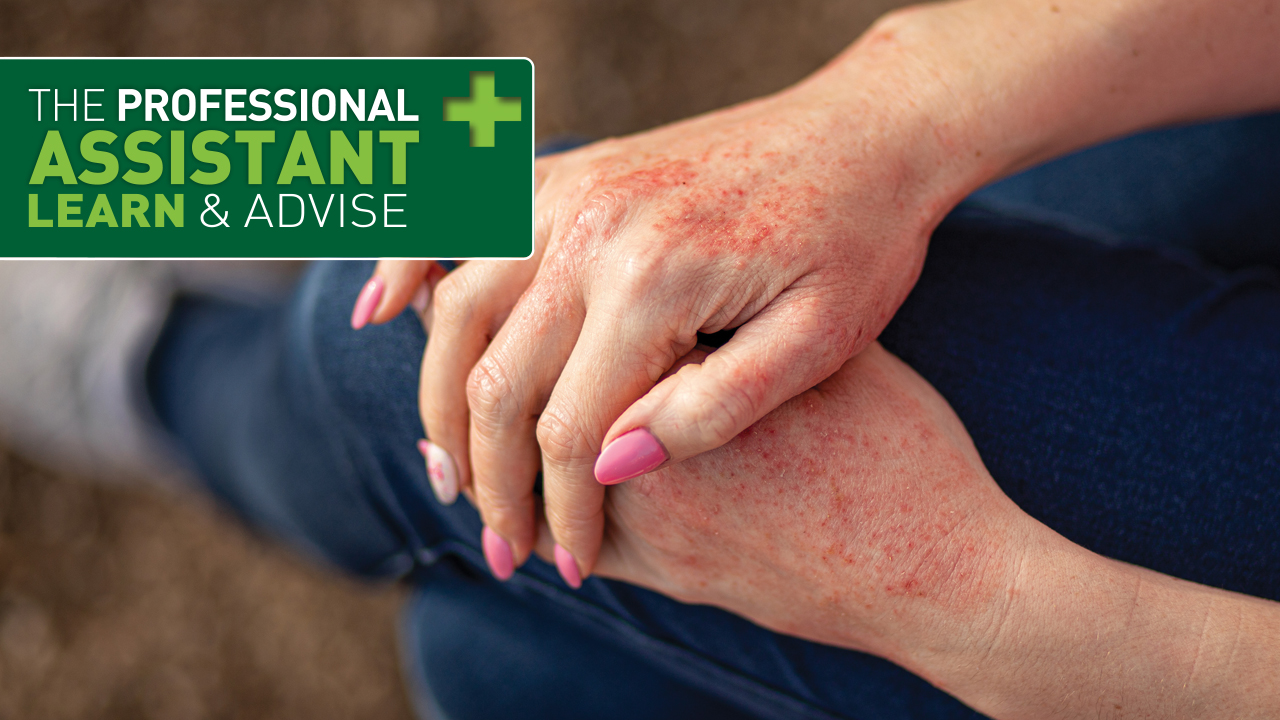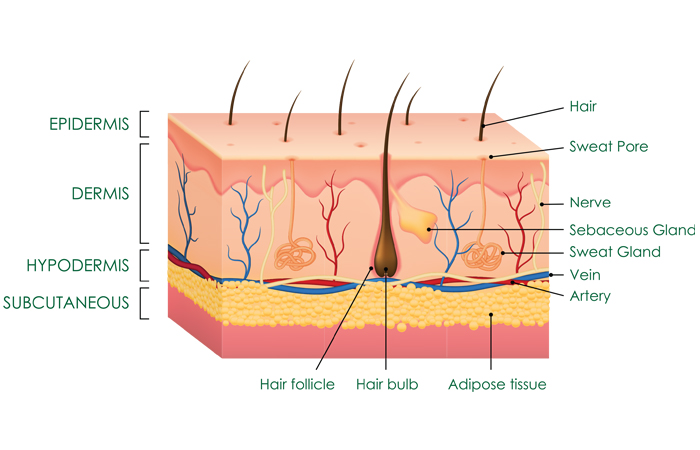In OTC
Bookmark
Learning objectives
After studying this module, assistants will:
- Know the difference between a ‘normal’ and a damaged skin barrier
- Understand the psychological impacts of living with eczema
- Be familiar with the various and extensive triggers of eczema
- Feel confident advising on a treatment path.
This diagram shows a cross-section of the skin in its normal, healthy state compared to skin symptoms of eczema, which is also known as dermatitis.
If skin loses moisture – including water, fats and oils – it becomes dry, meaning that irritants and bacteria pass through cracks to its deeper layers, causing irritation.
In response, white blood cells and fluid rush to the area and the accumulation of these white cells causes swelling and inflammation, leading to further irritation and itchiness.
Inflamed skin can appear red on lighter skin, and darker brown, purple or grey on darker skin. It can also be more difficult to see on darker skin.
This inflammation can become chronic, and the natural barrier of the skin compromised, which can lead to long-term, uncomfortable and irritable skin that can feel dry, itchy, cracked and sore, having a significant impact on quality of life.
Did you know?
Eczema is very common among children, and some, not all, will outgrow the condition by the time they reach adulthood.


